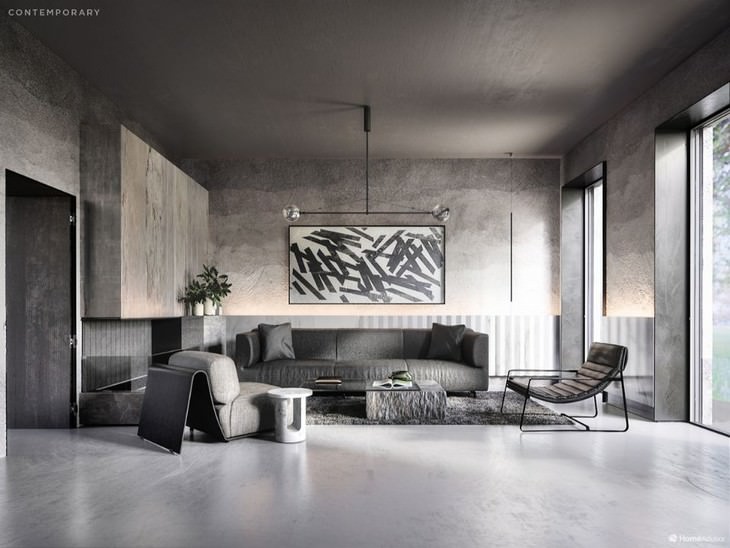
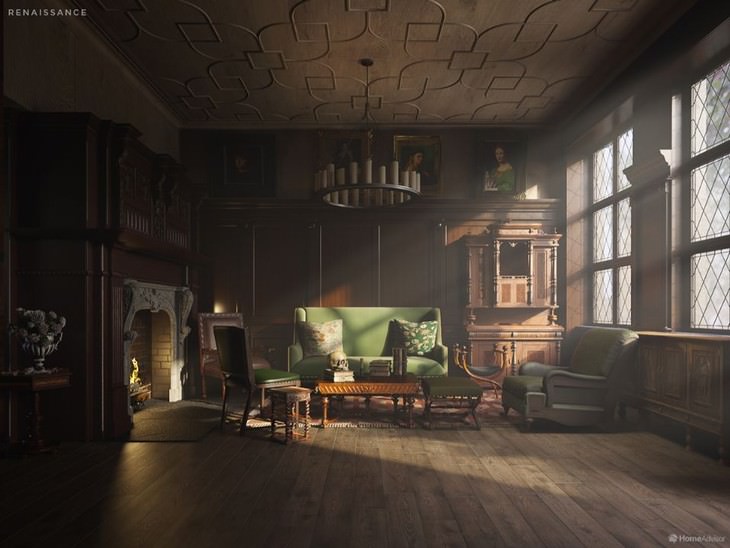
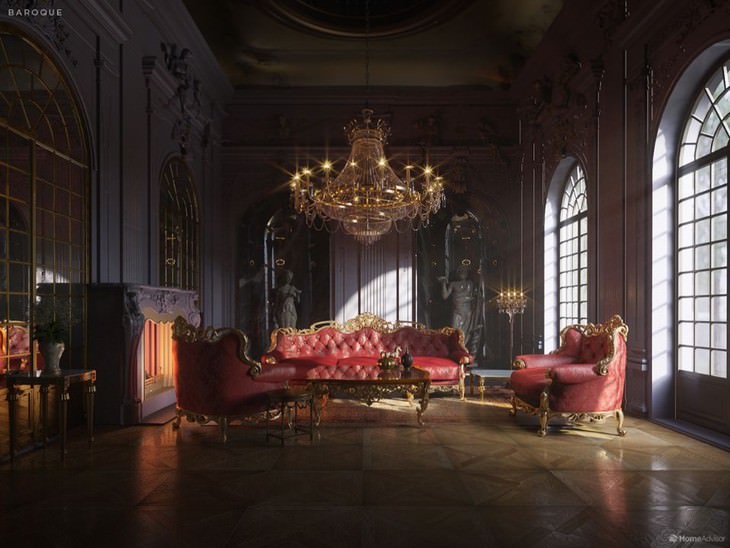
By the 1700's, times had changed, and the serious, dramatic and over-the-top aesthetic of Baroque-style art and design was no longer trendy. Instead, interiors became more light and airy. At the same time, Rococo interiors still retained the ornateness and rich detailing characteristic of Baroque interiors, but with a more playful feel to them.
Flower motifs and pastel colors combined with gold detailing are the defining characteristics of this period.
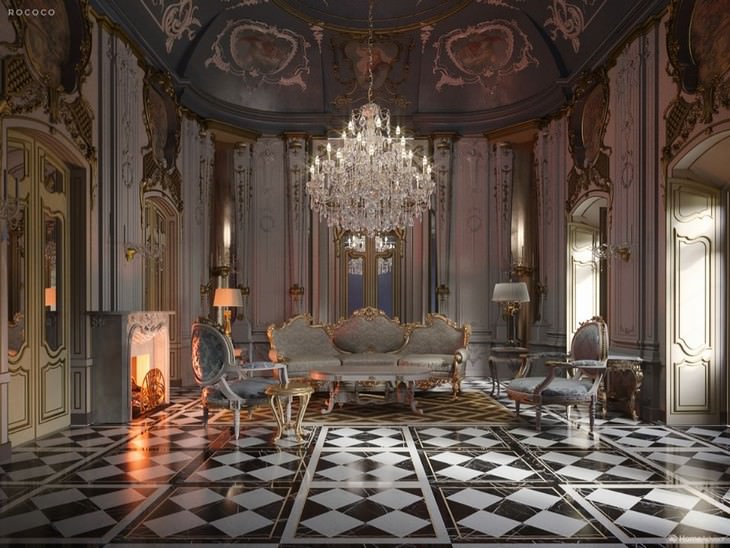
During the Neoclassical period, the excessive ornateness so characteristic of Baroque and Rococo art wasn't just abandoned, they were frowned upon. This is, in part, due to the French Revolution, which denounced aristocracy and their way of life.
This period is also known as the Age of Reason, when philosophy and science started to thrive, which is reflected in the relatively simple, straight and symmetrical layout of the room.
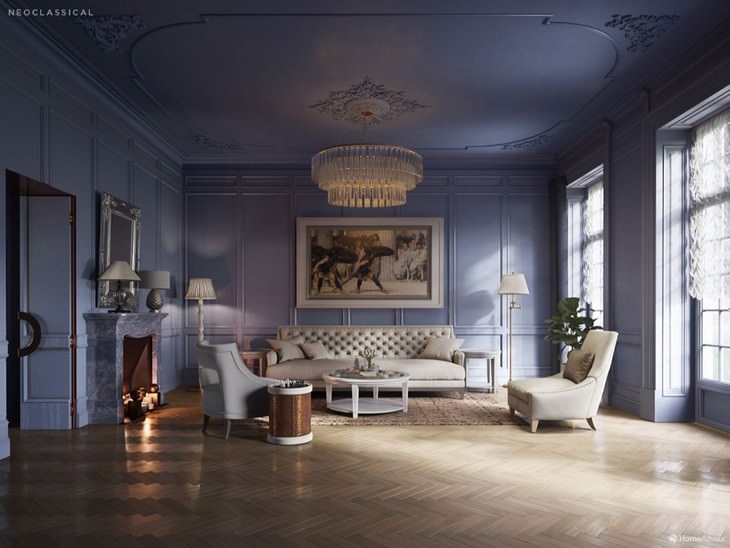
Once again, the historical advancements of the age are reflected in the interior design we see below. With the increased mechanization characteristic of the Industrial Revolution and the birth of mass production, the shapes and lines of the different interior elements became even more simplified. Instead of focusing on details and craftsmanship, the accent was on high quality, natural materials, and earthy tones.
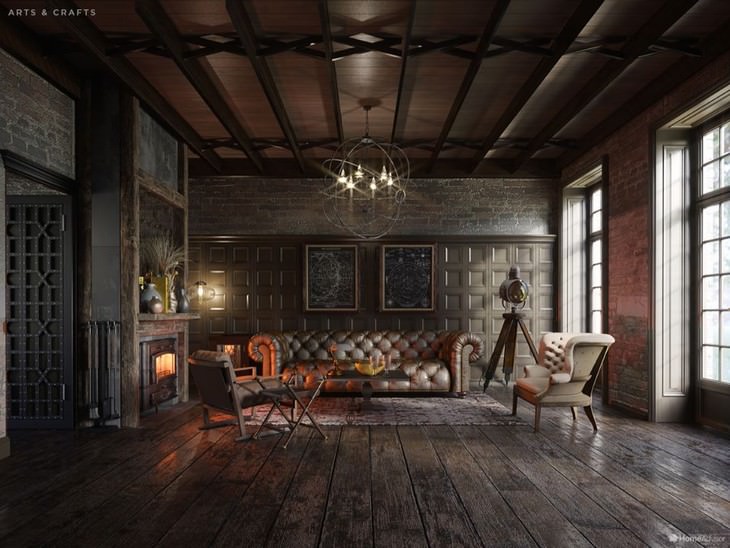
During the Modernist period, the simplification of interior design continued even further, just look at that little coffee table that looks just like a cube. New, synthetic materials were introduced and highly valued. Instead of being a reflection of your enormous wealth, the accent for any modernist interior was to be comfortable and affordable.
The early 20th century was also the time when the first interior designers emerged, and this very living room design was inspired by that of Japanese-American designer Isamu Noguchi.
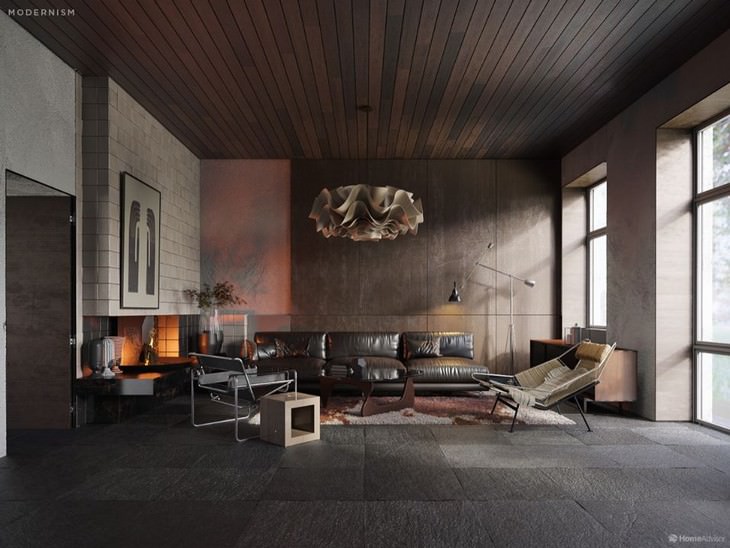
In stark opposition to the highly functional modernist style, art nouveau brought back the art into interior decoration. Of course, we see more ornamental motifs in this style (the gold is hard to ignore), but there's also an emphasis on nature and floral motifs in these interiors. The inspiration for floral patterns was taken from Japanese art and Impressionism, but with an urban twist.
Art nouveau interiors can be pretty much summed up by the ingenious and beautiful works of American artist Louis Comfort Tiffany.

Bringing the functionality of interior even further was the German school of art and architecture called Bauhaus, the leading representatives of which believed that functionality or even multi-functionality is the most important aspect in any design.
Another important aspect was affordability, and Bauhaus furniture designs were mass-produced and used inexpensive materials, such as steel tubes. These two key principles, affordability and functionality, made for the simplistic aesthetics consisting of primary shapes and lines that are strongly associated with Bauhaus today.
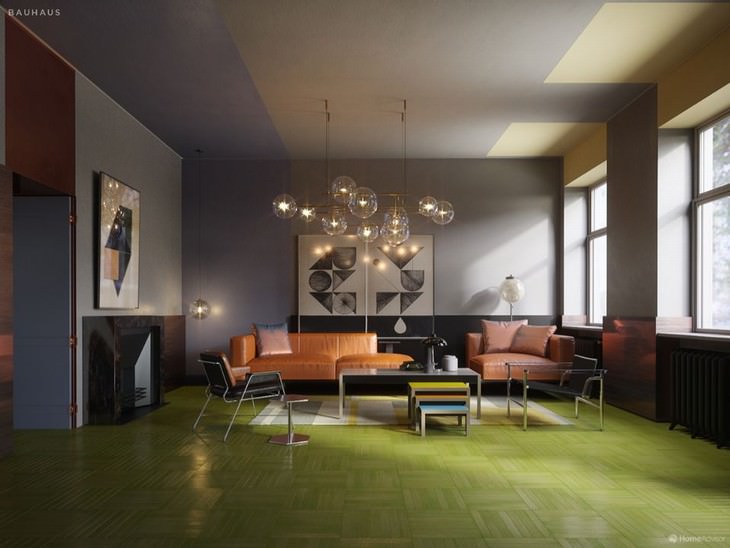
Further elaborating on the richness of embellishments and elements inspired by nature was the art deco style. Eye-catching colors, a combination of different textures, such as velvet, wood, and lacquer, as well as a kind of metropolitan chic are all characteristic of the style.
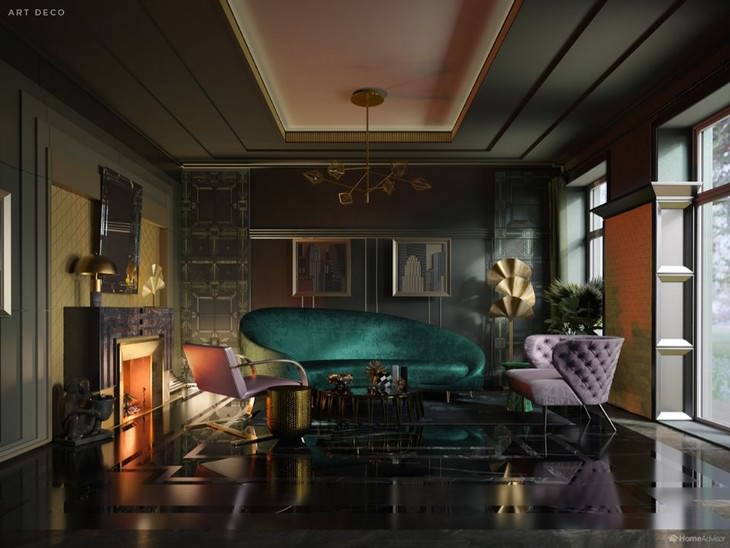
We finally arrived to the styles that are popular to this today. The mid-century modern style can be defined as a softer version of modernism. To spice up an otherwise boring and too simplistic modernist interior, designers that work in this style add natural textures, such as wood or bamboo, as well as some statement pieces to an otherwise bland and gray room.
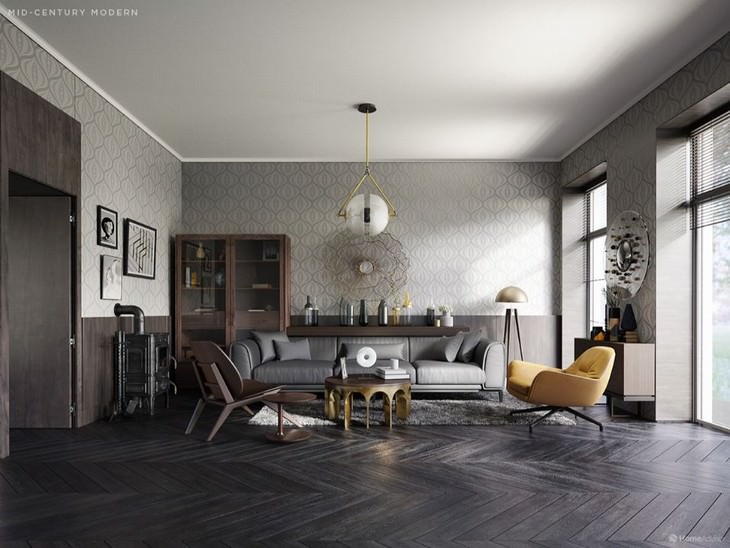
Like the art movement itself that embraces and gives an ironic twist to pop culture, postmodern interior, too, is an eclectic mixture of everything and anything. In a postmodern interior, every piece is a statement piece, and different, seemingly incompatible elements are all mixed together, resulting in a very playful room that screams Andy Warhol.
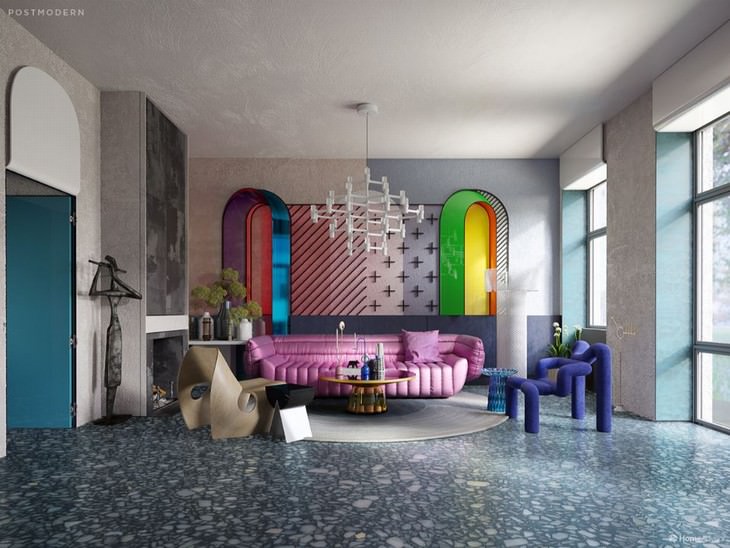
The contemporary style is the latest trend in interior design, and it tries to build upon the overall modernist structure consisting of simple, straight and symmetrical lines that make the interior feel very bright and spacious. Much like Mid-Century Modern living rooms, however, Contemporary interiors attempt to incorporate more natural textures and focal points into an otherwise minimalist space.
